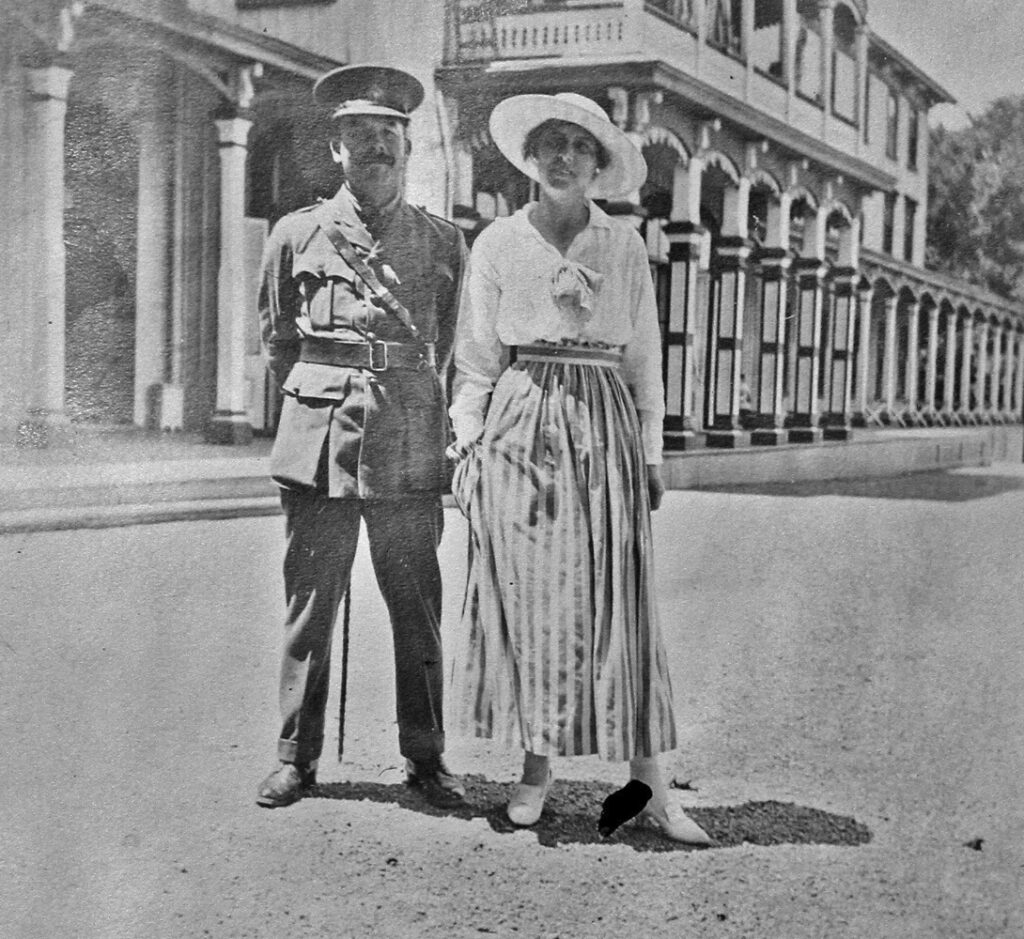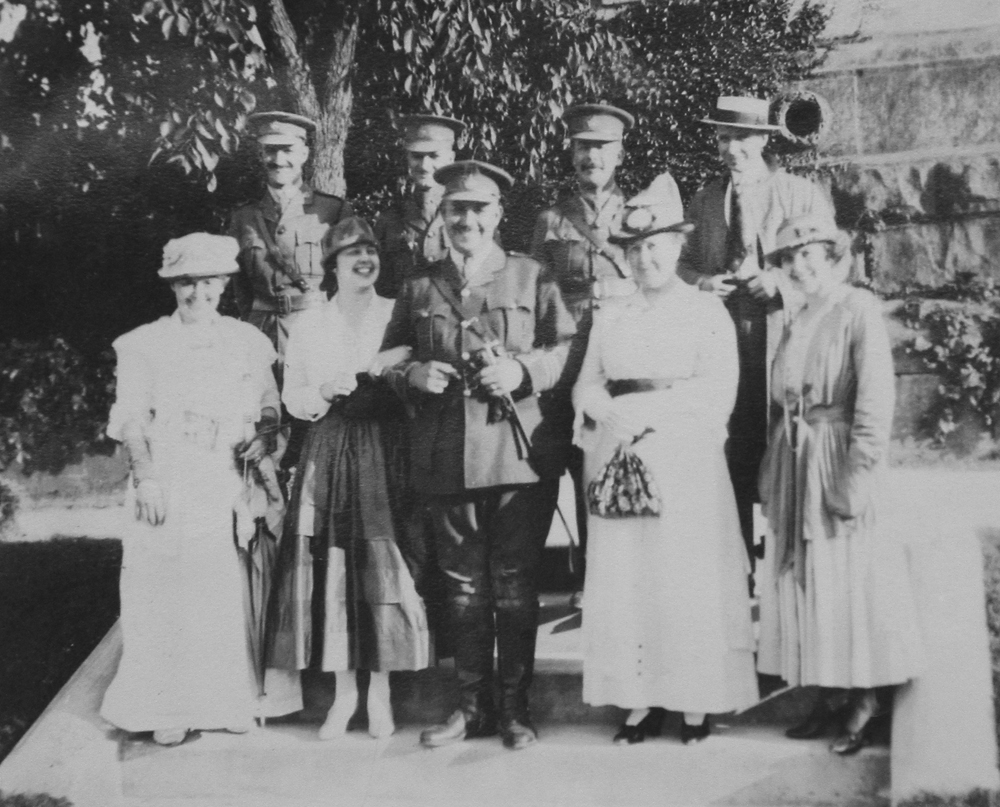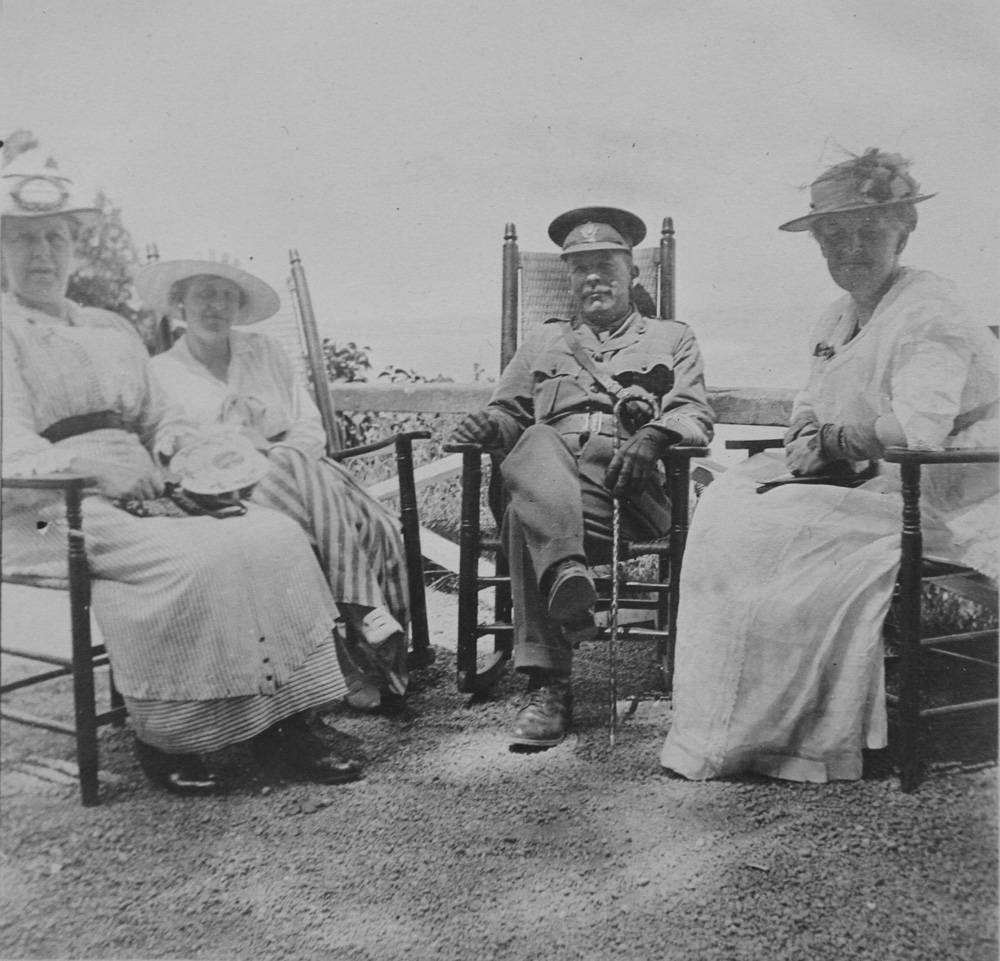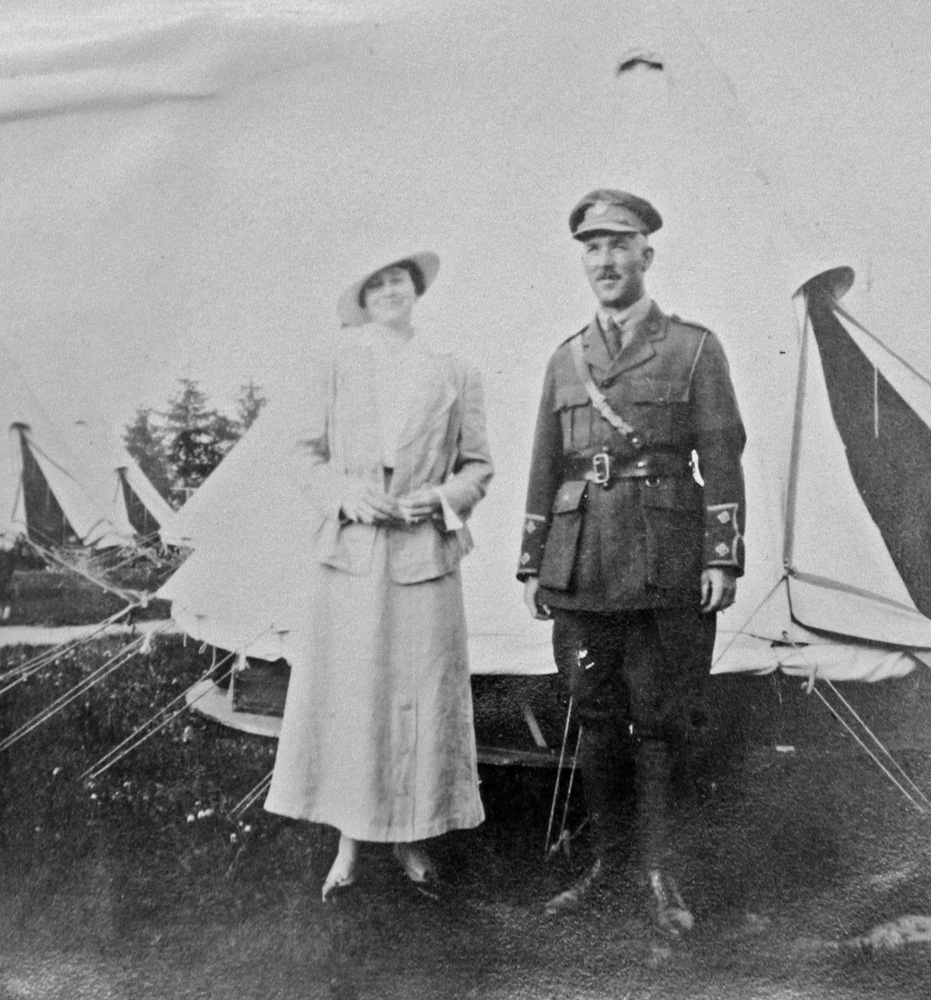During the early days of Canada’s Militia it was common for one day of the annual training camp to be aside for friends and family visits. This carried over to the First World War, at least in the case of the 116th Battalion. Newspaper accounts indicate that the Battalion was visited by friends and family on 5 July 1916 at Camp Niagara.
The photos in this article come from Mabel Sharpe’s scrapbook, held at the Canadian War Museum. Mabel was the wife of the 116th Battalion’s first commanding officer, Lieutenant Colonel Samuel Sharpe. It would appear that these photographs were taken on the friends and family day. The challenge with these photos is that only some of them are labelled. It requires a level of detective work to identify some of the individuals, while others cannot be identified.

The 116th Battalion arrived at Camp Niagara on 30 May 1916 for the next phasee of their training. Mabel Sharpe resided at the Queen’s Royal Hotel in Niagara-on-the-Lake while the 116th Battalion was based at the nearby camp. The hotel operated from 1869 to 1927 and the site is now the Queen’s Royal Park. Boats could dock directly in front of the hotel. It would seem likely that this where the party of friends and family arrived, with Mabel Sharpe acting as hostess.

Lieutenant Thomas Hutchison and his wife Muriel are shown in the photograph at left. Thomas and Muriel were newlyweds in this photo, having been married on 14 June 1916. Lieutenant Hutchison was wounded on 23 July 1917 during the battalion raid near Avion and died two days later. He is buried at Ecoivres Military Cemetery in France.
Several people can be identified in the group photograph at Brock’s Monument at Queenston Heights Park, below. The officer in the back row, second from left appears to be Lieutenant Harold Gould. Lieutenant Gould’s mother was Martha Sharpe, sister of Lieutenant Colonel Sharpe, thus Gould was Sharpe’s nephew. Lieutenant Colonel Sharpe is in the back row, third from left.

Major Carson McCormack is the officer in the front row, third from left. His mother Amelia is at the far left. Amelia was the second of Lieutenant Colonel Sharpe’s sisters, also making Major McCormack a nephew of the 116th Battalion’s commanding officer. Second from left appears to Grace McCormack, Major McCormack’s sister. Fourth from left in the front row is possibly Martha Gould. The others in the photograph cannot be identified, but they may be other relatives of the Sharpe family.
Lieutenant Hutchison was the Machine Gun Officer and Lieutenant Gould was a platoon commander at the time of these photos. Major McCormack was the Junior Major, making him third-in-command of the Battalion.
Harold Gould was living in Brantford, ON at the outbreak of the war where he had recently established a poster advertising company called Gould-Leslie Limited. He returned to Uxbridge, his place of birth, to join the 116th Battalion during the early recruiting in late 1915. Gould remained with the 116th Battalion until late 1917 when he was medically evacuated due to trench fever and eventually returned to Canada. He was awarded the Military Cross for “exceptional bravery under fire and general efficiency in work” in January 1918. Gould held the rank of Major at the end of the war. After the war he returned to Brantford and his advertising company which was later relocated to St. Catharines. Harold Gould passed away on 6 August 1947.
Major McCormack was a pre-war member of the Queen’s Own Rifles of Canada and had originally gone overseas with the 3rd Battalion in the autumn of 1914. He returned to Canada in August 1915 and joined the 116th while they were at Niagara. Carson McCormack ended the war as a Lieutenant Colonel and was awarded the Order of the British Empire. He became a senior partner in the stockbroker firm of Mara, McCarthy between the wars. At the outbreak of the Second World War he volunteered his services once more and commanded the prisoner-of-war camps at Espanola, Mimico and Lethbridge. He retired as a Colonel in early 1945 and opened a new stockbroker company. Carson McCormack passed away on 23 March 1945 due to a heart attack.
The photo below shows Lieutenant Colonel Sharpe and others relaxing, presumably at the Queen’s Royal Hotel. At left is probably Martha Gould, then Mabel Sharpe, LCol Sharpe and an unknown woman.

The next photo shows Lieutenant Martin Roach and wife Fanny. Roach was a pre-war member of the 34th Ontario Regiment and was a barrister in Beaverton. He was significantly older than most lieutenants, being 45 years old when he attested to the 116th Battalion. Roach was wounded in the summer of 1917 and also suffered from trench fever. He was released from the Canadian Expeditionary Force in early 1918 due to health issues and returned to his law practice. Martin Roach passed away on 1 March 1926 due to the effects of his service time.

Lieutenant Colonel Sharpe’s mental health struggles and his subsequent suicide on 25 May 1918 have been well documented.
None of the men in these photos lived particularly long lives, but what happened to the women documented here? Amelia McCormack (nee Sharpe) died in 1917, aged 53. Mabel Sharpe (nee Crosby) never remarried and died in 1938, aged 66. Fanny Roach never remarried and lived to the amazing age of 104 years, passing away in 1984. Muriel Hutchison (nee Vicars) remarried in 1925 and died in 1958, aged 68. Grace McCormack was single at the time of these photos. She married John Findlay in 1924, had three children, and passed away in 1984. Martha Gould (nee Sharpe) died in 1938 at the age of 76.
There are many more photos from this day in the Mabel Sharpe scrapbook but they tend to be blurry, due to the limitations of personal cameras of the time. The other photos generally show officers of the Battalion posing with family members and many of these are missing any identification. Some of the better examples of these photos will be in the August 2025 article.
For some soldiers of the 116th Battalion, this would have been the last day they ever saw their friends and relatives. The Battalion boarded a train on 20 July, headed for Halifax and then sailed to England. In February 1917 the 116th Battalion arrived in France.
Rod Henderson
Rod Henderson is the Regimental Historian of the Ontario Regiment. He served as a Sergeant in the Regiment and is the author of “Fidelis Et Paratus: A History of The Ontario Regiment (RCAC), 1866-2016”.

